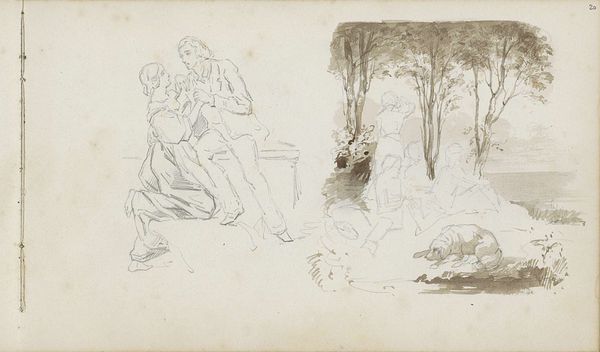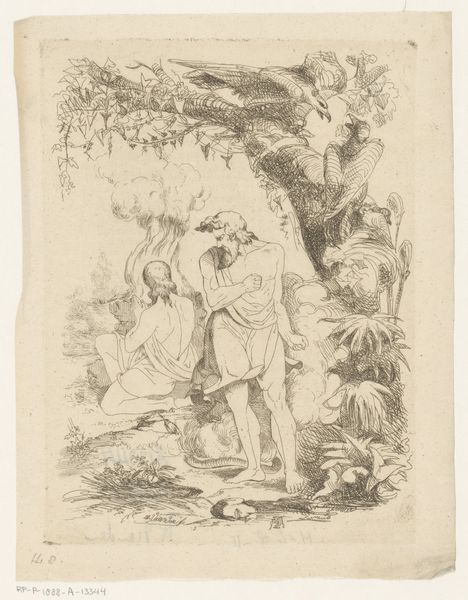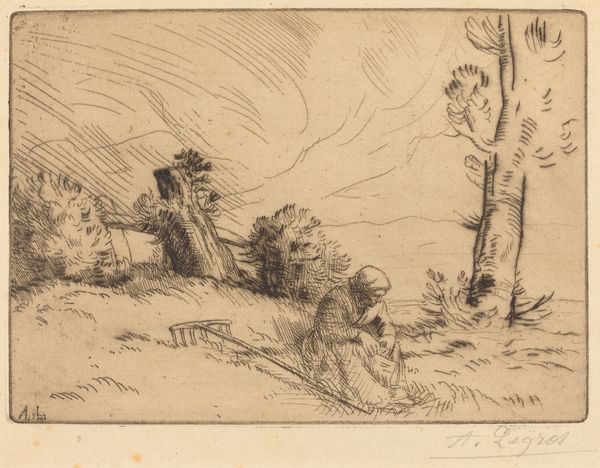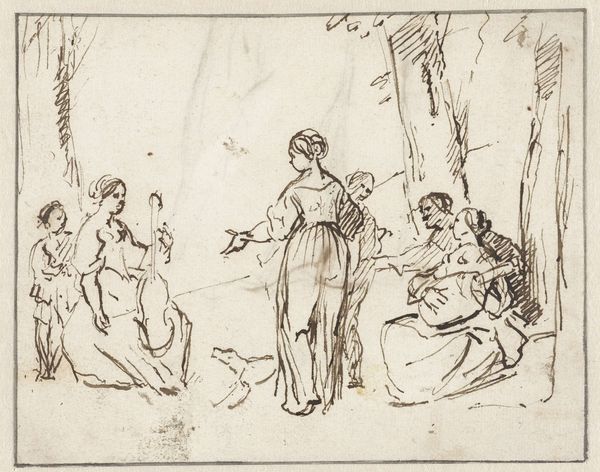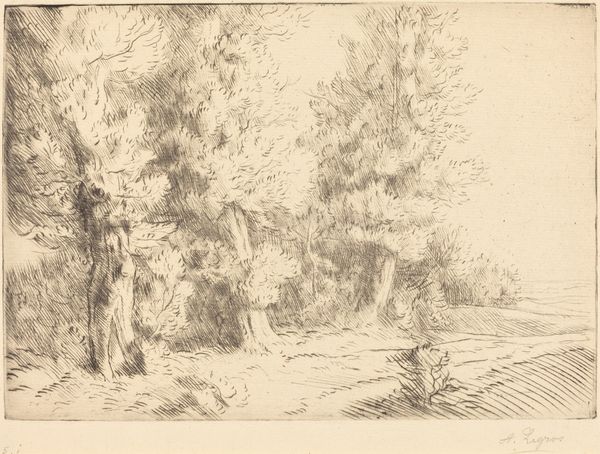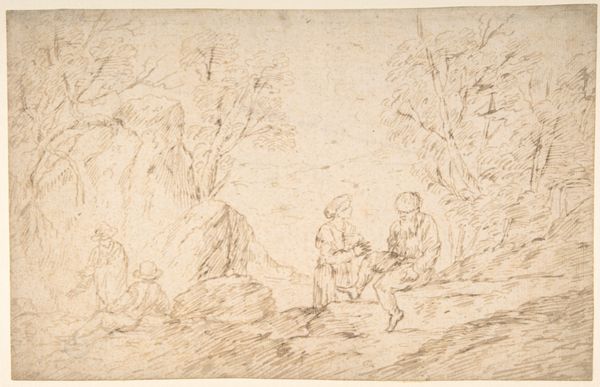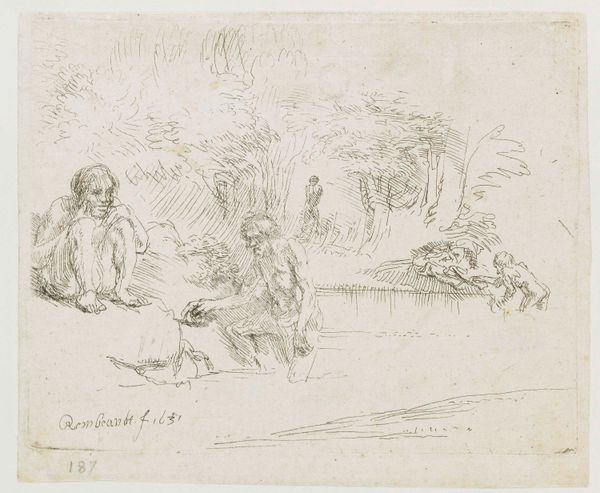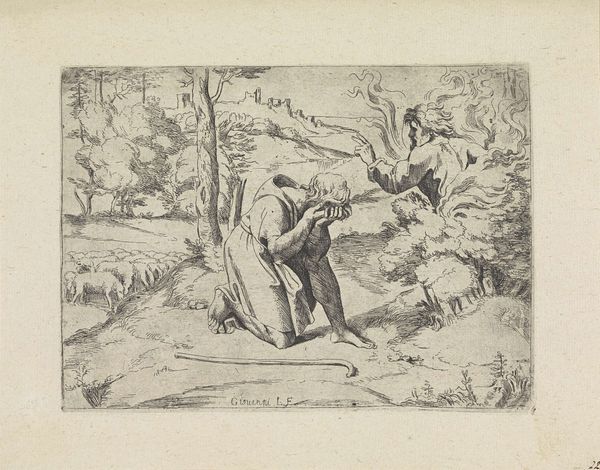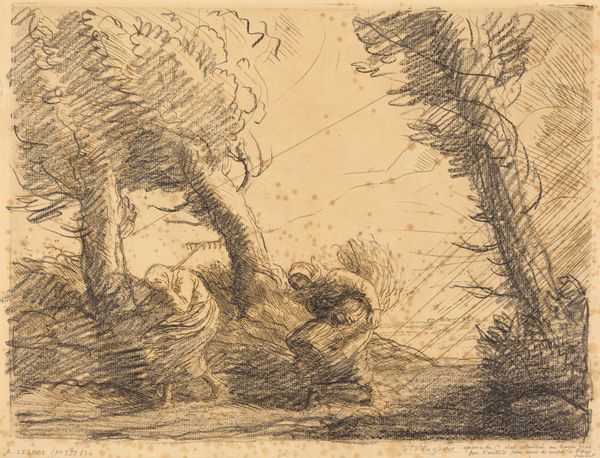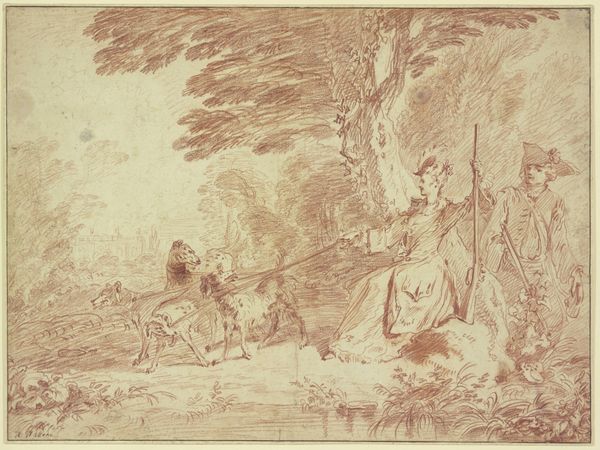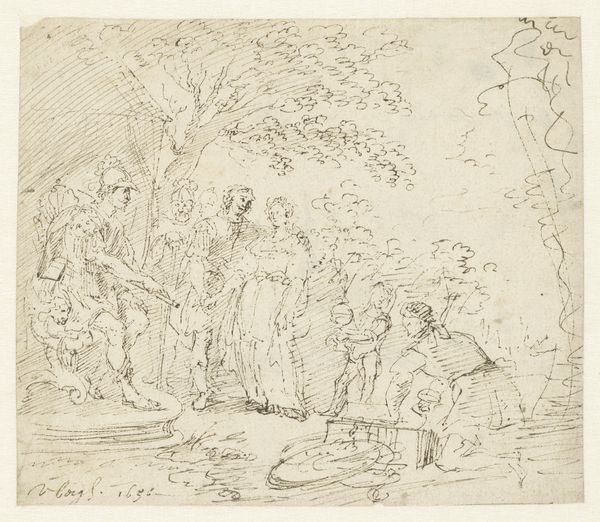
Dimensions: 125 × 190 mm (image); 159 × 218 mm (plate); 188 × 268 mm (primary support); 223 × 288 mm (secondary support)
Copyright: Public Domain
Curator: Looking at "The Pastoral Play," an etching by Theodore Roussel created in 1888, I am immediately drawn into the delicate, almost dreamlike quality of the scene. Editor: It feels like a fleeting moment captured in ink. There's a vulnerability, maybe even a little melancholy, in the spare lines and figures set within the undefined space, and yet there's an intriguing story hinted at between these characters. Curator: It’s important to remember that Roussel's artistic milieu placed a high value on printmaking. Etchings like this weren't merely studies, they were considered finished works that spoke to a broader artistic and intellectual discourse about the role of art in modern life. He explored modern themes by framing them within a softer more accessible style. Editor: The pastoral setting evokes notions of innocence and simpler times, perhaps as a refuge from the increasing urbanization and industrialization happening at that time. Note that only one is 'dressed' for such a simple occasion... The very figures suggest to me questions of performativity and gender within established social norms. Who are these figures performing for? Themselves? Or each other? What do the setting and their dress do to help solidify these readings? Curator: Precisely. This resonates with wider concerns within artistic circles at the time, in particular with Whistler who explored similar themes; issues of identity, and escapism as it connects to broader movements in literature and theater. This scene seems ripe with those symbolic anxieties, reflecting shifts in social values at the end of the nineteenth century. Editor: What strikes me is the tension between what we are shown and what’s deliberately left undefined. Is this an idyllic escape, or a staged drama where societal roles are being both played out and challenged? The lack of definition forces me to contemplate those questions about constructed identities. Curator: Roussel’s focus on line and suggestion definitely leaves us with many questions that still resound with audiences today. Editor: I’m walking away thinking about the complicated nature of artifice versus authenticity, not only for the characters within the frame, but how such complexities persist. It offers such an interesting framework through which to consider how we create ourselves for the world.
Comments
No comments
Be the first to comment and join the conversation on the ultimate creative platform.
